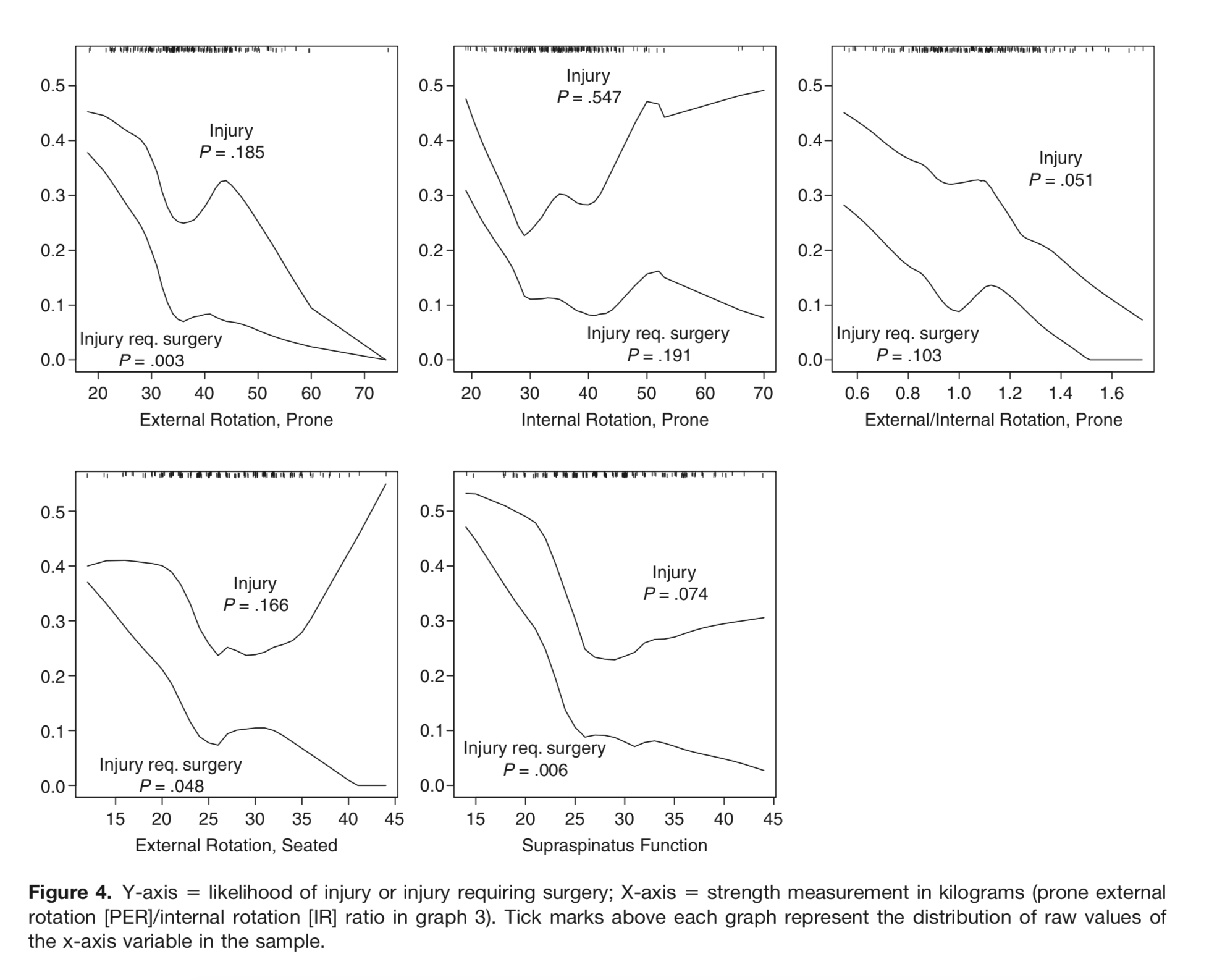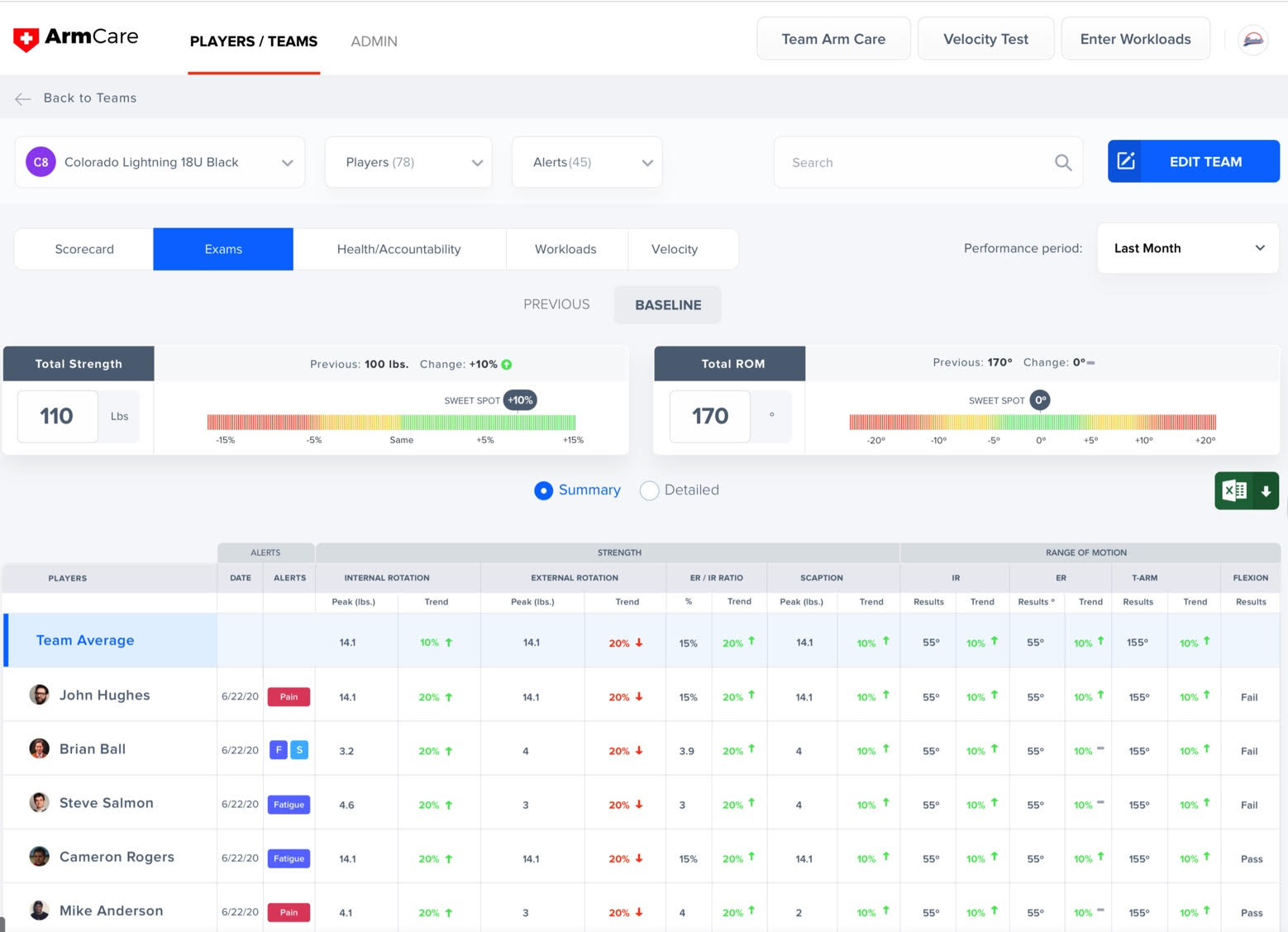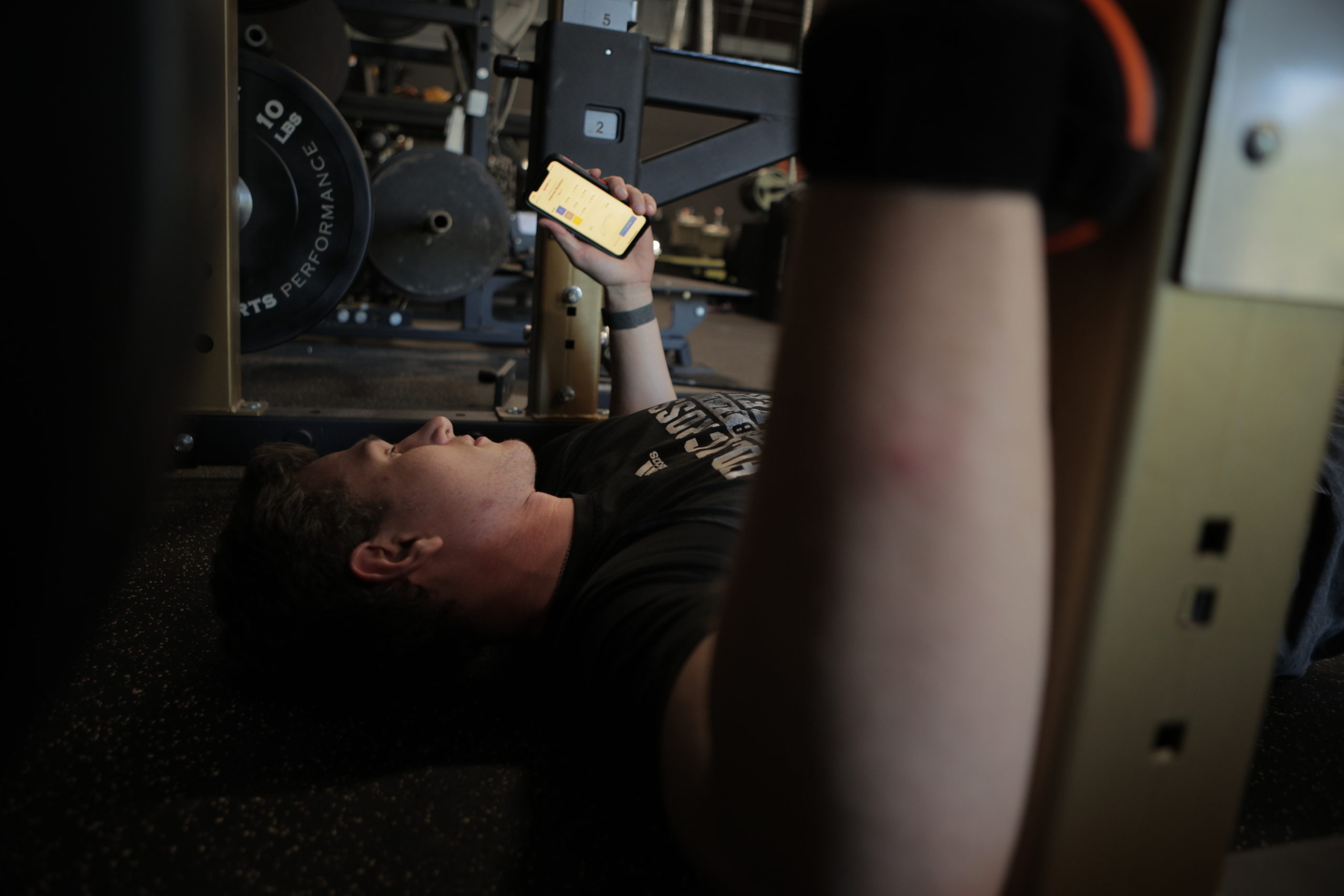The Arm Care App & Assessment Kit are available for purchase here.
(Save 10% by using the link above)
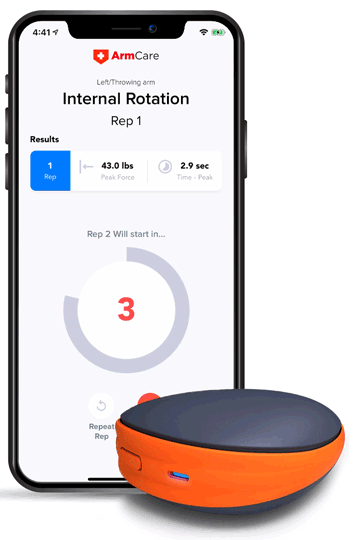
Product Review: The ArmCare App
The Arm Care App is a new release from the Crossover Symmetry team, compatible with iOS and sold with a hand-held strength sensor, it walks athletes through a comprehensive arm strength and mobility screen and provides individualized daily Arm Care routines based on their needs.
From athletes looking to level up their approach to arm care, to coaches looking to add another layer to their assessment process, this App is worth a closer look.
I spent the past six months beta-testing the app, talking with the founders, and suggesting ways to make it maximally beneficial for the baseball industry.
Here are my thoughts on the finished product.
How it works
Download the app & register an account.
Download the Arm Care App on the App Store. You cannot register an account from within the app, so head to ArmCare.com to register a membership ($10/month if paid annually) after which you’ll be able to log in to the app using the email and password you create at checkout.
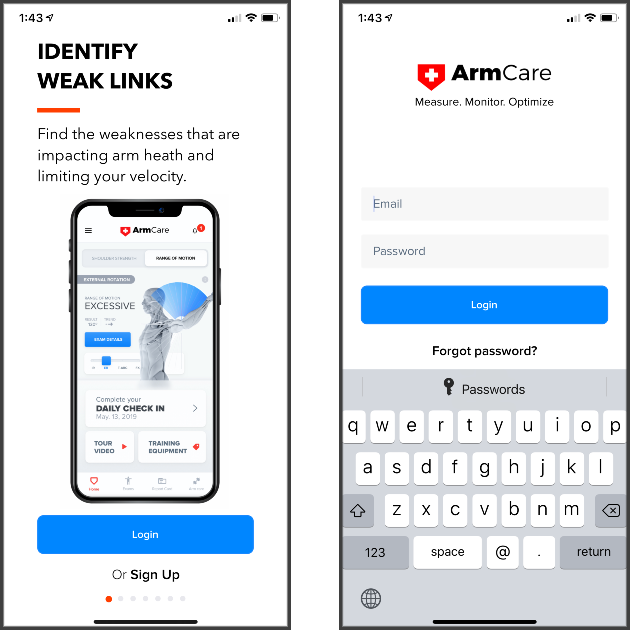
Home Screen & Intro Tutorial
When you first enter the app you’ll be prompted to enter some basic info like height, weight and position as well as any previous surgeries, what phase of the year you’re in (in-season, off-season) and where you typically get sore after throwing.
From here you’ll be taken to the home screen. At the bottom are four tabs: Home, Exams, Report Card and ArmCare.
The home screen will first offer you a brief tour video of the app, showing you how it works. I found this quite useful to get my bearings initially.
Above that, you’ll see two more things:
- A Daily Check-In section: this is where the app will ask athletes about their arm soreness, body fatigue and sleep quality. It logs this info and can be viewed by the coach in a team dashboard. More on this later.
- A Results Overview Section: this will show an anatomical model, but will not contain data on the athlete’s shoulder strength or range of motion until he/she completes the first exam. Clicking ‘Start Exam’ will walk you through gathering your initial data.

Your First Exam
One thing I really love about this app is the level of detail and personalization. When you begin your first exam, you’ll fill out questions about your most recent throwing session, current arm soreness, what type of throwing you did that day and if you warmed up prior to the exam.

Range of Motion Testing
With the Assessment Kit that you’ll purchase with the App (save 10% with coupon code ‘TREAD’), you’ll have a hanging wall-banner that allows you to gather an active shoulder rotation number without needing a partner or medical professional. Just follow the steps and answer the in-app prompts.
For coaches who don’t have the training or time to perform shoulder rotation assessments on all of their pitchers, this is a largely foolproof way to gather usable mobility data and allow the app to identify gross asymmetries in your athletes’ shoulders.

Strength Testing
After pairing the strength sensor that comes with the Assessment Kit via bluetooth, the Arm Care App walks you through three tests:
- Internal Rotation strength
- External Rotation strength
- Scaption

These aren’t random tests – they’re the same ones tested in numerous research studies and are also standard shoulder strength-tests used by MLB organizations during spring training assessments.
For example, take a look at this graph from Byram et al (2010) which compiled shoulder strength in professional pitchers over a 5-year period and looked at chance of injury and chance of injury requiring surgery.
Take a look at the prone external rotation graph (top left), as well as the external/internal rotation ratio graph (top right).
As isometric testing strength of the external rotators increased, there was a very strong correlation with decreased injury risk. There was also a very strong relationship between ER/IR ratio and decreased injury risk.
For reference: having an IR strength of 50 and an ER strength of 50 would be a 1.0 ratio. Anything above a 1.0 means the external rotators tested stronger than the internal rotators (good) and anything below a 1.0 means the internal rotators tested stronger than the external rotators (potentially bad).
The Arm Care App draws on existing research to diagnose and address shoulder strength and mobility imbalances that may be predictive of future injury.

Report Card
Once you finish your first exam, you’ll be given a thorough summary of your results. This includes:
- Scores for strength, symmetry, fatigue, mobility and other factors (fig 1).
- A Pre-Velocity Screen that tells you if the athlete is “cleared” to do any sort of velocity training or if there are several red flags that should be addressed first.
- Detailed explanations of how you performed on each test and the relevance of why that metric is important (fig 2).
- How you stack up against other athletes of the same level (fig 3).

What I love is that they have a checklist of points to consider before beginning a velocity training program. Some of these may seem like common sense (pic below), but trust me, common sense isn’t so common.


Additional Features
1. Daily Check-Ins
Once the app has identified certain areas for improvement, it will prompt the athlete to complete a daily check-in to track arm soreness, sleep quality and recovery. This is important on the back end for coaches to be able to track their whole pitching staff at once in the team dashboard and see which guys are recovering and if anyone has self-reported pain or soreness.

2. Pre-Throwing Prep
The app will walk the athlete through a shoulder, hip and core activation protocol. This protocol uses their Crossover Symmetry shoulder and hip bands (which I have found to be excellent quality), although you could do these movements with other bands as well in a pinch.
After talking with the Arm Care founders, they want this work to slot in alongside the normal warm-up and training that most athletes are already doing.
It isn’t substituting for a dynamic warm-up, foam rolling, etc. but rather a pre-hab layer that coaches can add to what they’re already doing.

3. Custom Post-Throwing Arm Care
This is the part you’ve been waiting for. After answering several questions about when the athlete last pitched, their level of recovery, and when they anticipate throwing hard again, the app will build out custom arm care for that day that takes these factors into account and emphasizes the weak areas it identified in your most up-to-date exam.


4. Coaches’ Dashboard
One of the most valuable features (to be released by December 2020) is a coaches’ dashboard that allows a coach (or several coaches) to monitor all athletes in that team or organization.
Coaches will also be sent a daily summary email every morning to help them optimize their training plans for that day. Click here to see a sample.
5. Test a Friend / Strength Tester
A couple additional features built in to the app are the Test-A-Friend feature and the Strength-Tester feature. Once one athlete has purchased the app and equipment, he can quickly take a second athlete through the same exam, and the results will be emailed to that athlete.
Pretty good idea.
As a coach, you can also unlock and use the strength sensor for other muscle testing outside of the tests in the app. Maybe you want to gather data on hip, forearm or ankle isometric strength and carry out your own research. This gives you the ability to do so, collecting both Peak force and Time to Peak.
Pros
The pros, as I see them, are listed below:
- Affordable price-point
- Ability to quickly gather shoulder strength and range of motion data
- Easy learning curve
- Ability to track strength changes over time with regular exams
- Arm care routine automatically evolves day to day
- Clearly displayed info on what each score means
- Coaches’ dashboard to monitor all athletes in a team / organization
Cons
The biggest limitation to the Arm Care app is also its advantage – the narrow focus on Arm Care and simplicity, which allows it to have wide appeal and application with athletes and coaches of all levels.
This type of quick exam will never be a true substitute for a full medical exam or a total body movement screen like we use with our online coaching clients at Tread.
“The App will never be a true substitute for a full medical exam or a total body movement screen.”
It tells you one piece of the puzzle – admittedly an important one – but it is not a performance cure-all nor an injury prevention magic bullet.
However, it does give coaches who don’t have the time, know-how or resources to gather this level of data quite a formidable tool to do so.
How We Will Be Using The Arm Care App
We will be using the Arm Care App as an additional layer to our in-house service. Rather than manually gathering dynamometer data and recording it on our end, we will be able to have athletes self-administer strength exams on a weekly basis and centrally track their shoulder strength, soreness and fatigue from within the coaches’ dashboard.
Who should buy it?
There are two groups who should consider the Arm Care app: coaches and athletes.
Athletes: if you’re looking to gather additional information on your arm health and strength, this app is a relatively affordable investment that could pay huge dividends if it uncovers strength or mobility deficits that may contribute to preventing a future arm injury.
Coaches: If you want to be able to gather data for your team or organization that is highly predictive of arm injuries and effortlessly administer strengthening protocols to all of your athletes, the Arm Care App is a game changer.
Since you’ll be able to use the assessment kit with your entire team/org for years to come, the affordable price-point makes it even more of a slam dunk investment.
Where To Purchase
Save 10% on the Arm Care App & Assessment Kit through this link.

